Ice Dam Removal & Damage Repair in Minnesota
Snow and ice accumulation on your roof.
Free Inspections & Estimates
Accumulation of snow and ice on your roof can cause serious damage to your property.
Excessive weight of heavy snow and ice dams can impair any roof. As this excessive ice and snow melts, the water stays pooled on the roof eventually seeping between shingles and draining inside your home. No matter the age of your roof, if ignored, accumulated snow and ice on a roof can cause thousands of dollars in both exterior and interior repairs.
Caring for the roof of your property.
- Regularly clear your roof of snow to prevent excessive weight accumulation and ice dams.
- After a major snowfall, inspect your roof and clear excessive snow with a proper roof rake.
- In a heavy accumulation, where you lack equipment or the necessary help to safely handle removal, SB Restoration will send experienced technicians to safely remove dangerous levels of snow and ice. SB Restoration techs will then inspect your roof for any damage and recommend an early intervention to prevent further damage.
- If you have ice dams forming, use an ice-melt product to remove the buildup.
SB Restoration Services will work closely with you and your insurance agent or adjuster to get your claim processed in a timely manner.
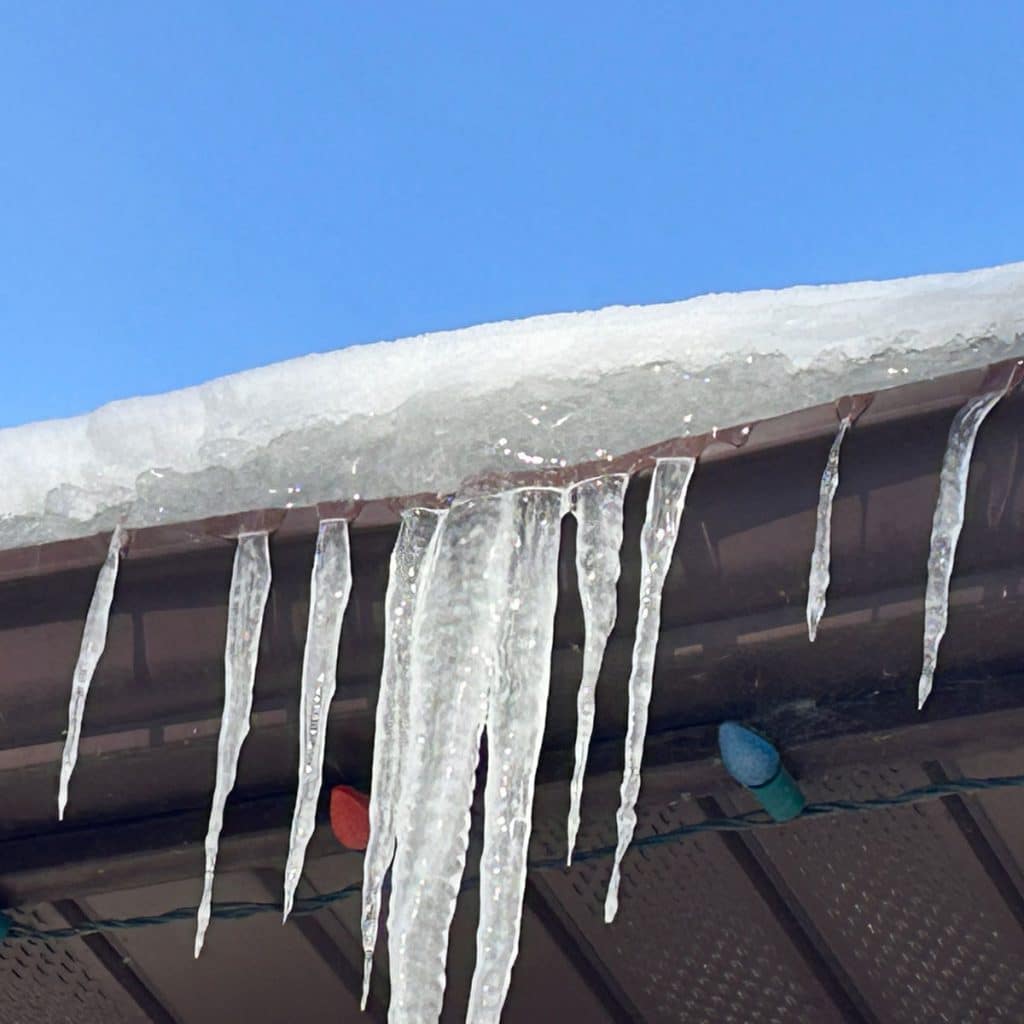
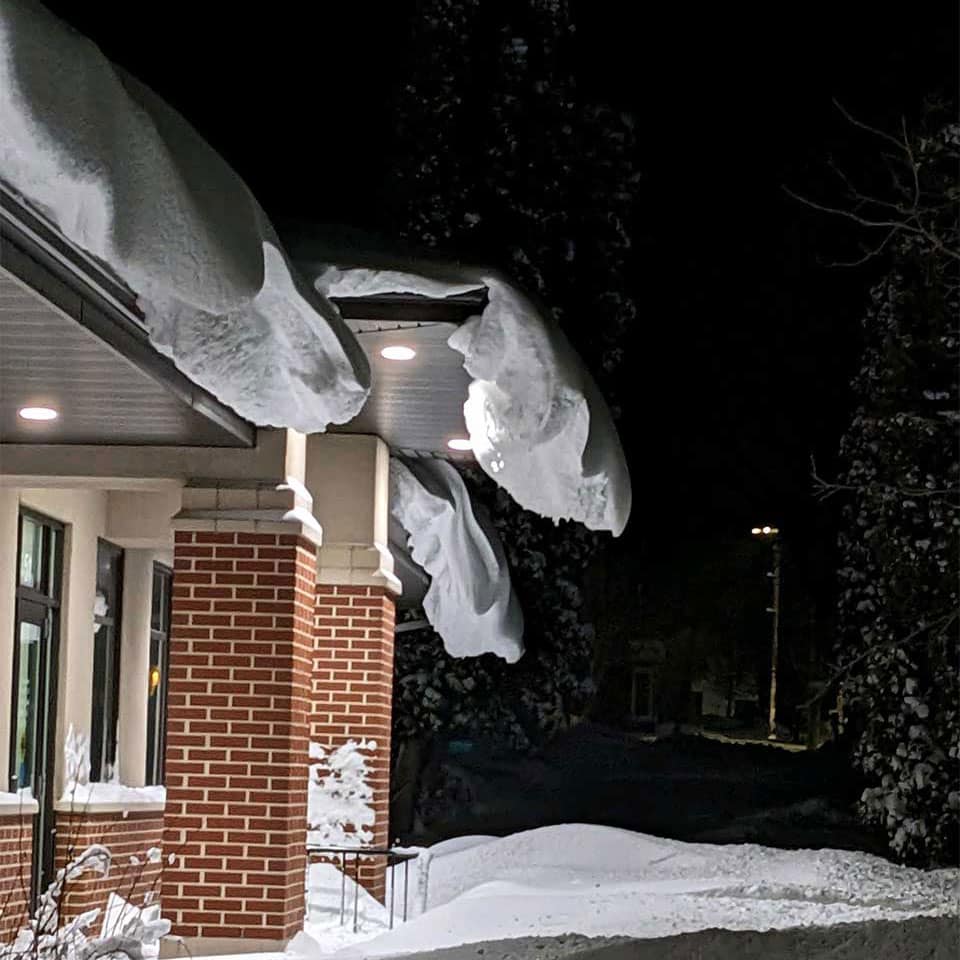
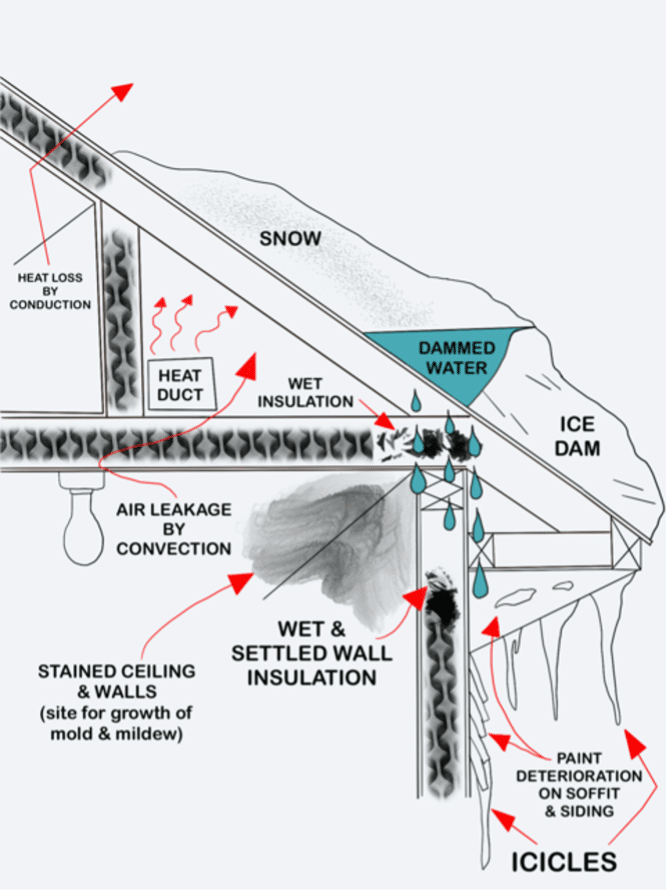
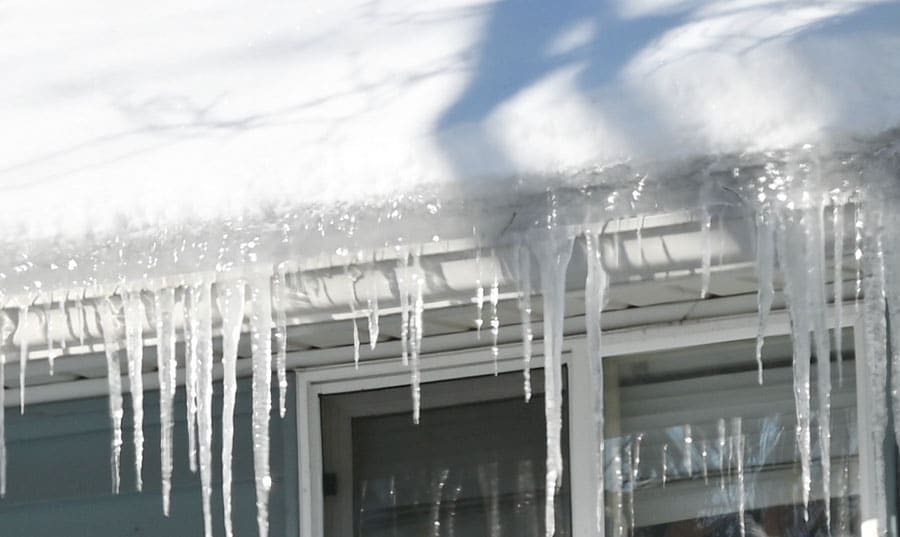
What is an ice dam?
An ice dam is a ridge of ice that forms at the edge of a roof and prevents melting snow (water) from draining off. The water that backs up behind the dam can infiltrate a home’s interior and cause damage to walls, ceilings, insulation, and other areas.
The photo and content is from the University of Minnesota Extension Cross-section drawing of a house roof with ice dam showing water damage.
Listed below are highlights from the University of Minnesota Extension, the authors Patrick Huelman, Extension specialist; Richard Stone, Extension educator; Timothy Larson and Lewis Hendricks
What causes ice dams?
Nonuniform roof surface temperatures lead to ice dams.
Heat loss from a house, snow cover and outside temperatures interact to form ice dams. For ice dams to form there must be snow on the roof and, at the same time, higher portions of the roof’s outside surface must be above 32 degrees F (freezing) while lower surfaces are below 32F. These are average temperatures over sustained periods of time. For a portion of the roof to be below freezing, outside temperatures must also be below freezing.
The snow on a roof surface that is above freezing will melt. As water flows down the roof, it reaches the portion of the roof that is below 32F and freezes. This causes the ice dam.
The dam grows as it is fed by the melting snow above it, but it will limit itself to the portions of the roof that average below 32F. So the water above backs up behind the ice dam and remains a liquid. This water finds cracks and openings in the exterior roof covering and flows into the attic space. From the attic it could flow into exterior walls or through the ceiling insulation and stain the ceiling finish.
What causes different roof surface temperatures?
Since most ice dams form at the edge of the roof, there must be a heat source warming the roof elsewhere. This heat primarily comes from the house. In rare instances, increased heat from the sun may cause these temperature differences.
How to Prevent Ice Dams
- Properly insulate attic areas and prevent heat from escaping; this may require sealing.
- Keep gutters clean, free of debris to ensure melting snow can properly run off.
The Damaging Effects of Ice Dams Can Include
- Moisture entering the home from ice dams can lead to the growth of mold and mildew. These are conditions that can cause respiratory problems.
- Prevent the growth of mold and mildew by immediately drying out portions of the house that are wet or damp.
- Take immediate action to get rid of the water source, clean the home environment and maintain air quality.
How to Remove Ice Dams
Treat the ice with a suitable ice melt chemical* and use appropriate tools to break ice into chunks, or have the roof professionally steamed to remove the ice buildup. Calcium chloride, the product used to melt ice from sidewalks and driveways, works well.
Fill a tube sock or pantyhose with the granules, tie the ends closed, position the socks vertically over the dam, and have the socks hang slightly over the roof edge. The melting will occur towards the center, through and down the dam, allowing the water to flow off the roof.
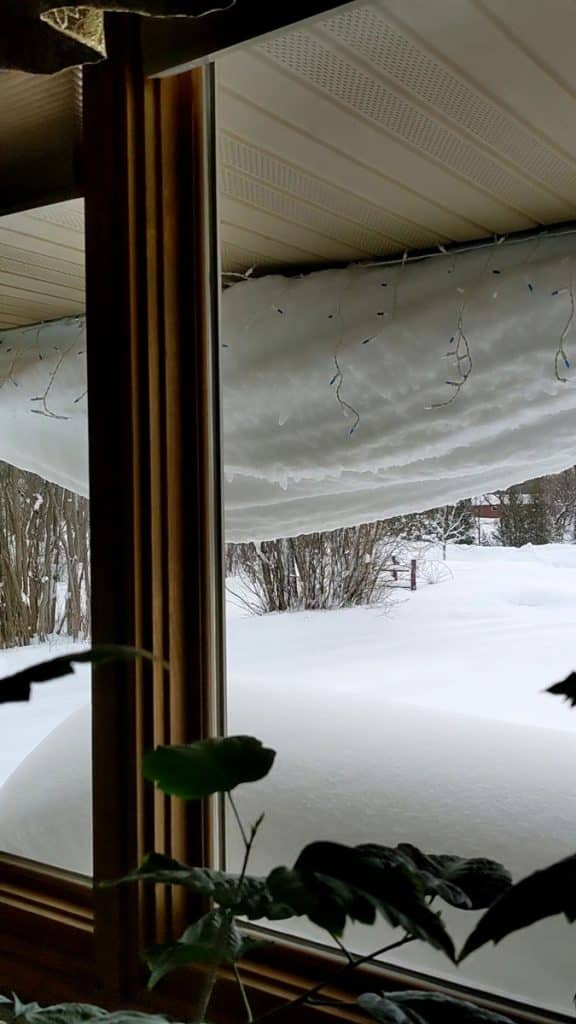
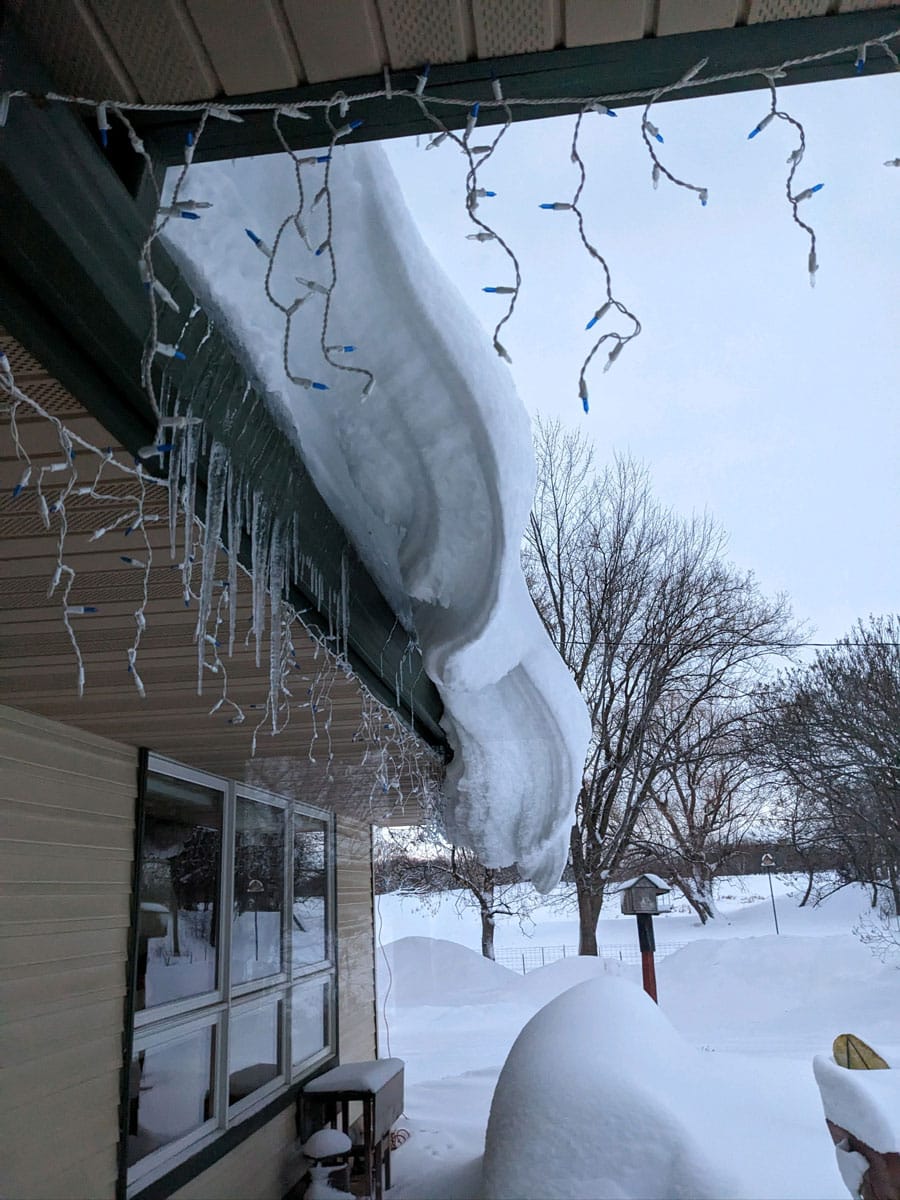
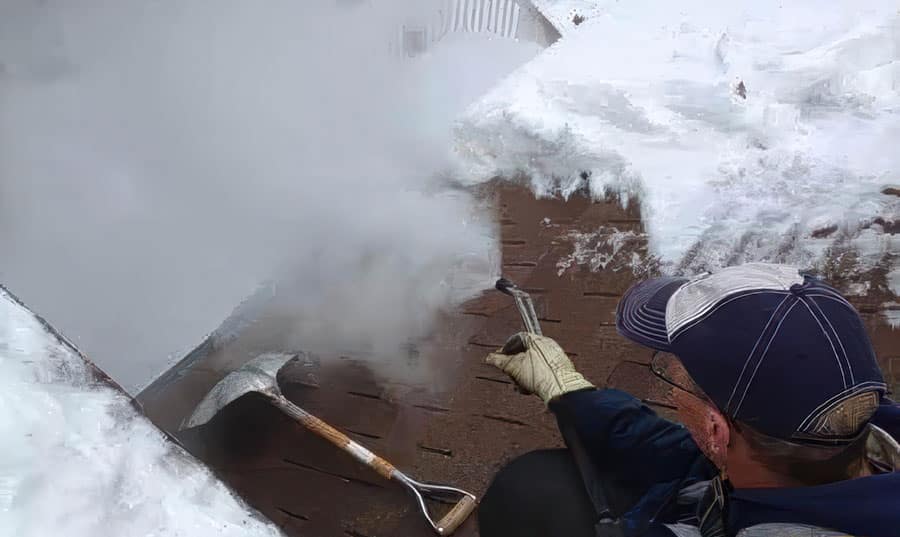
Trust SB Restoration Services Professional Snow and Ice Dam Removal
Our skilled staff will remove excessive snow from the roof by shoveling and steaming areas to melt ice buildup.
- Equipment is commercial grade and specific for safely and effectively clearing roofs.
- The cost depends on the size of home, pitch of roof, equipment required, and amount of snow or ice to be removed.
- Snow removal minimum stop $425 plus an hourly rate, if required.
- Ice dam minimum stop $525 plus an hourly rate, if required.
To schedule your appointment or consult with a team member contact us today.
Regular care and maintenance are the keys to preventing ice dams before they occur. Give us a follow on Facebook! We give great tips and ideas.
